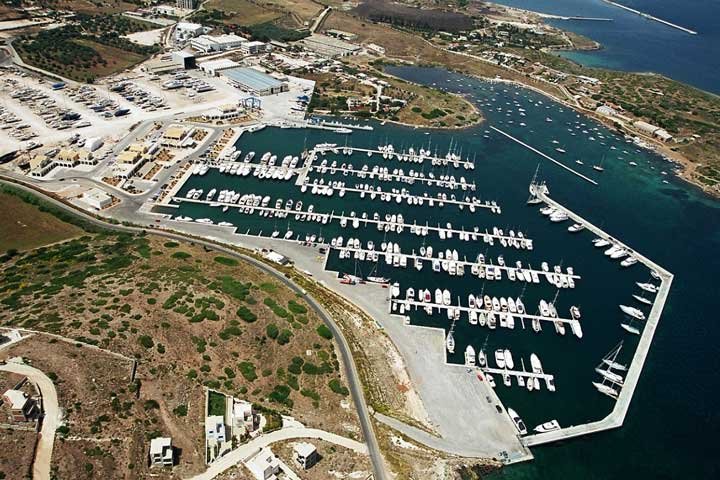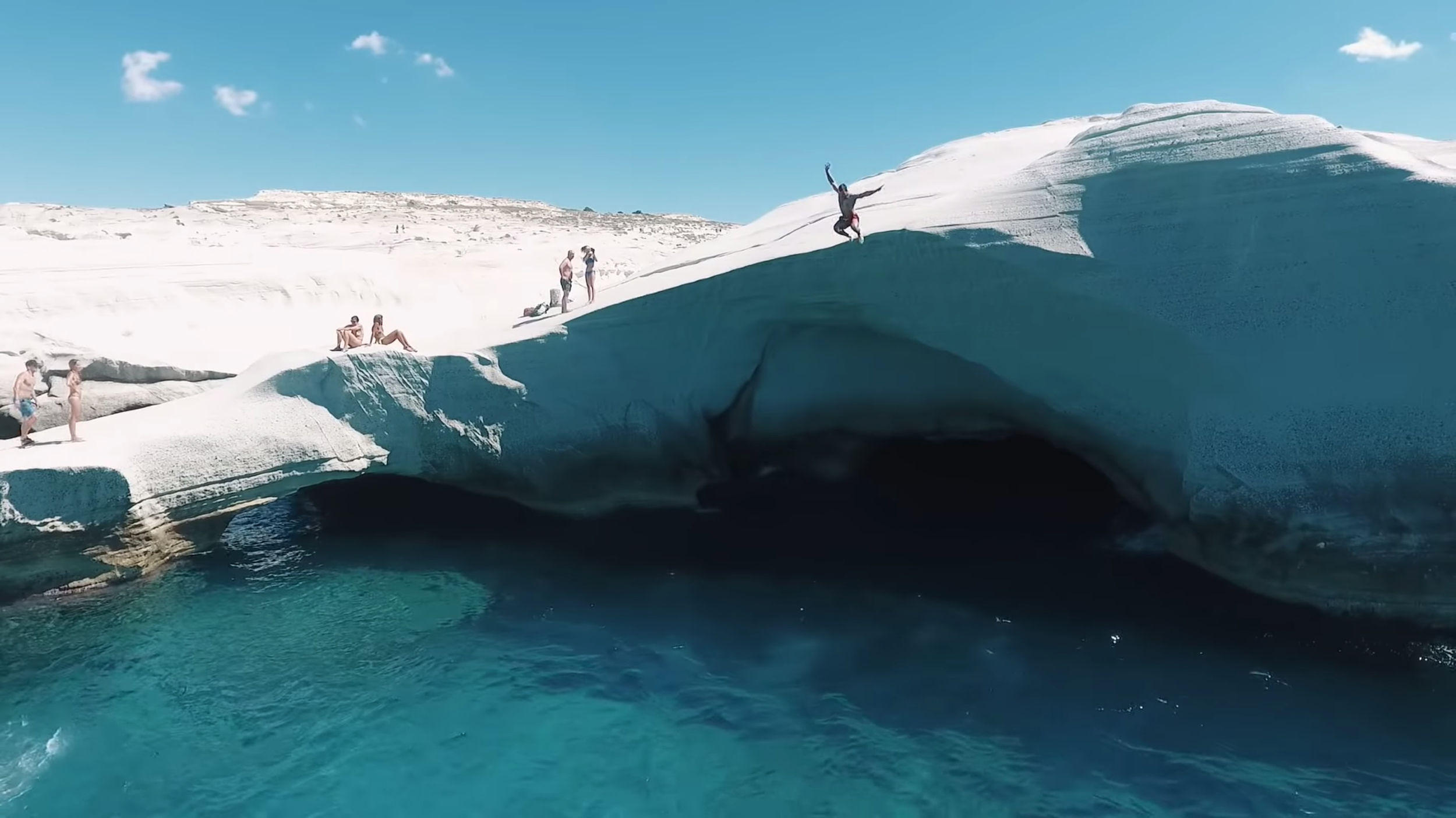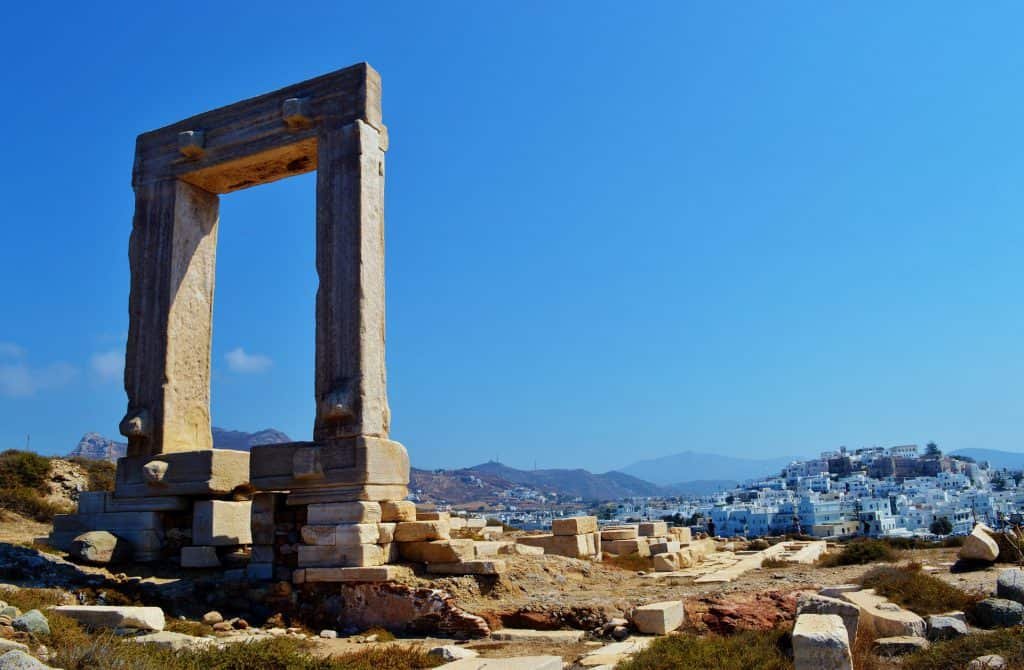
Cyclades Islands
”Greek Sailing Holidays”
Pristine Yachting helps you plan your once-in-a-lifetime, dream sailing holidays with a yacht charter in the Cyclades, Greece! Cyclades (Κυκλάδες) is the quintessential group of Aegean islands. Their name comes from the Greek word κύκλος (circle) because they form a rough circle centred around the small island Delos.
The islands are arid and rocky which gives them incredible, natural beauty. Their traditional architecture with its white-washed houses and arches blend harmoniously with the terrain. Yet, each island has an individual character and diversity ranging from the volcanic Santorini to the remote Donousa.
For the cruiser, there are many interesting sight-seeing sites as well as many anchorages. From the trendy Mykonos and the cosmopolitan Syros to the uninhabited Rhinia.
The best times to tour the Cyclades are in the Spring, May and June, and in the autumn, September and October. You are less likely to encounter strong Meltemi winds and also all the anchorages are less crowded. Other than the weather-wise unpredictable winter months, the worse time to be cruising the Cyclades is during the month of August. In August not only will you encounter a number of Meltemi gales but all harbours and anchorages, even the most remote, will be crowded as this is the prime vacation time in Greece and the rest of the EU.
Places To Visit: The Cyclades Islands of greece
The Different Ways To Yacht charter
What Marinas can I depart from?
-

Mykonos New Harbour
Known locally as the ‘New Port’, Mykonos Marina is actually a part-finished marina located about 2km to the north of Mykonos and the ‘old harbour’. It provides adequate shelter from the prevailing winds and is quiet, some distance from the central city. Not long ago, this marina was what you could call every man for himself. However, in 2015 a new harbour master was installed, and modern electric and water pylons were put in place. The organisation in the marina is now much better!
There aren’t any major dangers during the approach to the marina. Look out for the big cruise ships docked on the outskirts of the marina breakwater to help locate the entrance. You enter the marina from a south-easterly direction and the depths inside are between 5.0 – 6.0 metres.
Address: Via Notarbartolo, 35 – 90141 Palermo
Phone: +30 6946942091 (Nikos)
Website: https://www.marinareservation.com/marina-mikonos-marina-215
VHF Channels: 12
Open: All year
Max Length Berths: 30m
Number of Berths: 40Marina Services: Water, Bar, Restaurant, Electricity, Dressing rooms, Crane, Ramp, Rent a car, Seamanship, Service Station for ships, ATM, Master harbour
-

Lavrion Marina (Mainland)
The charming Lavrion Marina, designed around Lavrio City’s gulf, is full of Greek culture, warm weather and prime and ideal access to the Cyclades Islands. Whilst you’re passing through, don’t miss the Ancient Theater of Lavrion, a fascinating historical landmark positioned close to the marina that will surely impress you with its unique architecture! If you want to go scuba diving before your sailing adventure, check out the Planet Blue Diving Centre – they’ll bring you to the surrounding coral reefs, shipwrecks and underwater secrets close to the marina. There is also a selection of fine restaurants close by with a delicious selection of fresh seafood brought to you by passionate, local Greeks. Must-see venues include the famous ‘To Steki to Mina’ and the Arte Italiana.
Address: Lavreotiki 195 00, Greece
Phone: +30 22920 27711
Email: info@oll.gr
Website: https://oll.gr/
VHF Channels: 16
Open: All year
Max Length Berths: 30m
Number of Berths: 680Marina Services: Water, Bar, Electricity, Market, Dressing rooms, Diving, Rent a Car, Crane, Restaurant, ATM, Master harbour
Suggested Route: Map
Ready to start planning?
Weather & Sailing Conditions
From mid-June to mid-September, the peak summer months, the weather in the Cyclades is heavily impacted by the Meltemi. This is a prevailing wind, famously known as the Meltemi. Through the western Cyclades, the wind blows from a north-easterly direction. In the east, it blows from the north,
The best times to tour the Cyclades are in the early season of May and June and the late season of September and October, when you are not as likely to confront the strong Meltemi winds. On top of this, the docks, towns and anchorages will always be much less busy! The hotter, busier months that are more susceptible to the strong Meltemi winds are the peak summer months of July and August. During this time, not only will you encounter several Meltemi gales (and we are talking bright blue, clear skies and strong winds) but every harbour, dock and anchorage will be crowded. Even the most remote and least popular will be busy, as this is the prime vacation time throughout Greece.
The Cyclades holds within its cluster of islands some of the most legendary destinations in Greece, embedded in folklore and at the top of everybody’s wishlist. However, this can also be one of the most skillfully challenging; without excellent planning, preparation and experience could become frustrating, if not dangerous.
The Cyclades is affected by a powerful, frequent prevailing wind called the Meltemi, most prominent in the hottest months between mid-June and mid-September, and where the cyclonic effects of a high-pressure cyclone to the west and a low-pressure cyclone to the east meet in the middle. As a result, you can experience 35 to 40 knots, sometimes for days at a time, whilst enjoying blue, cloudless skies and blazing sunshine. For a yacht, this can make sailing between the islands, travelling against the wind back up to the north, and arriving and departing from harbours and mooring positions very difficult and sometimes impossible.
Much thought, planning and skill are required here; you mustn’t take unnecessary risks, you must understand the weather and plan your week accordingly. You don’t want to be stuck in Ios or Santorini with a days sail back to Mykonos ahead of you, straight into the Meltemi. Indeed, you don’t want to be stuck on one island all week. If you are there when the Meltemi blows, pick a larger destination with lots of dock space and arrive early in the morning of the wind or even the day before. If possible, anchor with your stern lines into the wind, and you won’t have to worry so much about your anchor dragging.
Essential Travel Information: Greece
Currency: Euro (EUR)
Language: Greek
International Dialling Code: +30
Visa requirements: Citizens of the EU, US, Canada, Australia, and New Zealand do not need a visa to visit Greece for stays of up to 90 days.
Best time to visit: The best time to visit Greece depends on what you want to see and do. The peak tourist season is June to August, when the weather is hottest, and the beaches are busiest. May and September shoulder seasons have more moderate temperatures and fewer tourists.
Weather: Greece has a Mediterranean climate, with hot summers and mild winters. In summer, temperatures can reach up to 40 °C (104 °F) on the mainland and 30 °C (86 °F) on the islands.
Health and Safety: Greece is generally considered safe, but visitors should be aware of the risk of pickpocketing and theft in tourist areas. Be sure to keep your personal belongings safe and secure at all times.
Transportation: Greece has an excellent public transportation system, including buses, trains, and ferries. Taxis are also readily available.
Food and drink: Greek cuisine is known for its healthy and delicious food, including dishes such as moussaka, dolmades, and souvlaki. Greek wine and ouzo are popular drinks.
Tips and Customs: Tipping is not mandatory, but it is customary to leave a small tip (5-10%) in restaurants and cafes. In Greece, it is considered impolite to leave food on your plate, and it is also customary to dress modestly when visiting religious sites.
Tourist Attractions: Some of the most popular tourist attractions in Greece include the Acropolis and the Parthenon in Athens, the island of Santorini, the ancient city of Delphi, and the Palace of Knossos in Crete.
Worldwide Charter Destinations
Why Choose Pristine Yachting?













































